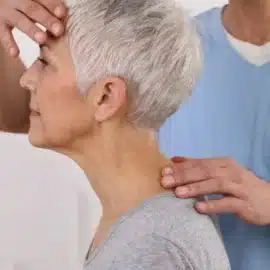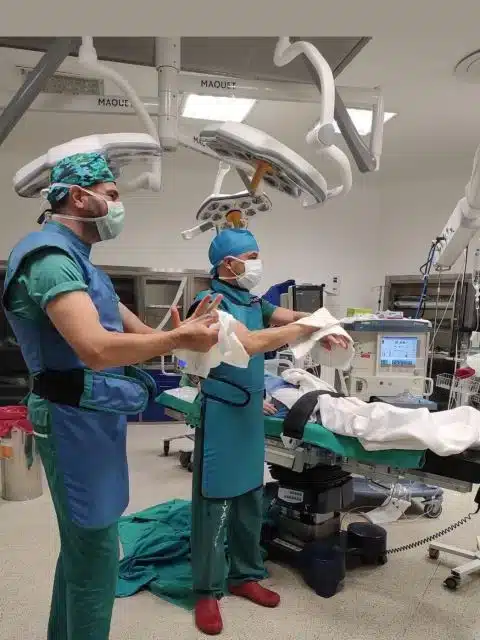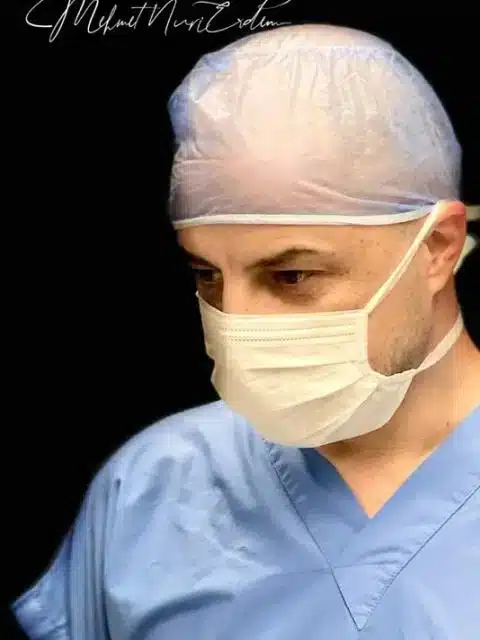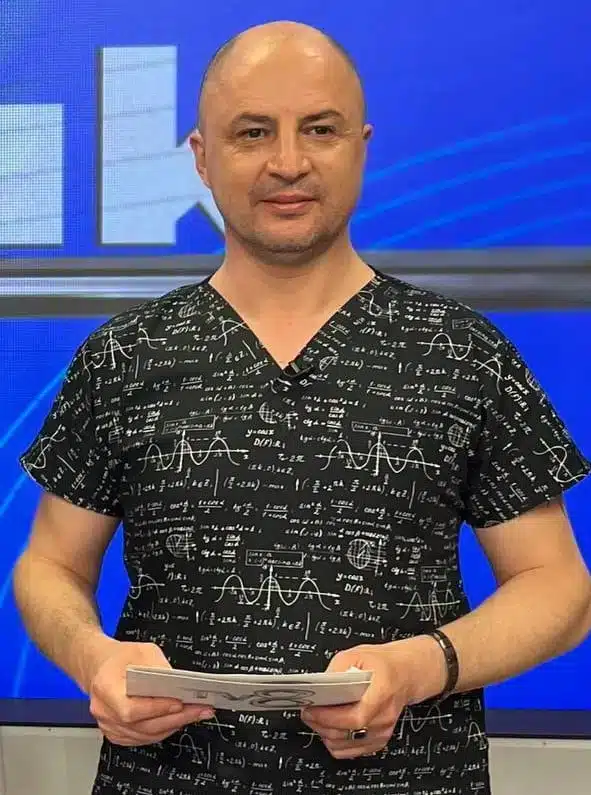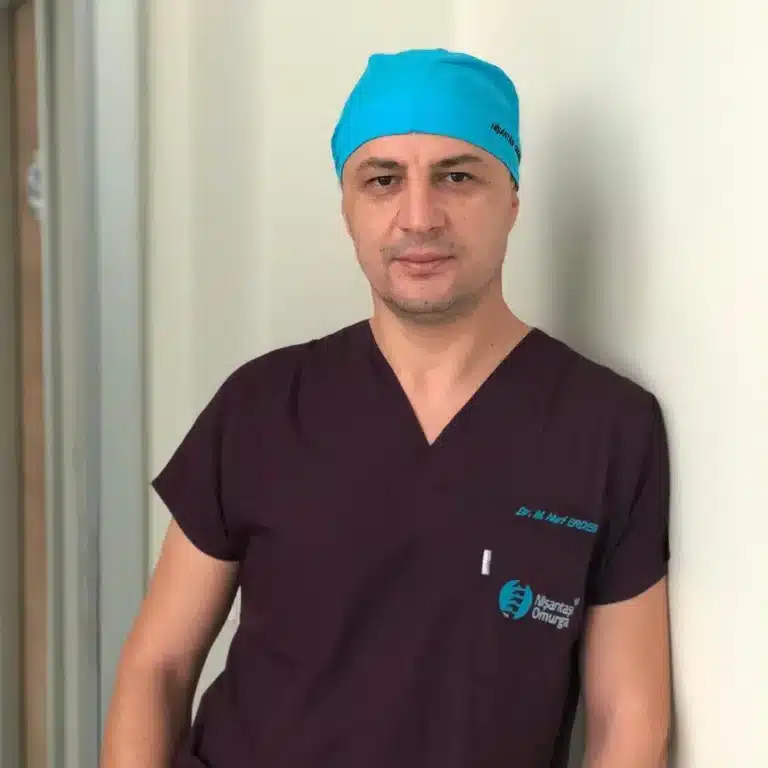What is Kyphosis?
Kyphosis is an increased front to back curve of the spine. In fact, this term can be used for all areas of the spine, but in practice, it is most often associated with the upper back(thoracic) spine.
When we look at the spine globally from the side, we see three curvatures. We have a dimple in our neck, a hump on our back and another dimple in our waist. That is, the dorsal vertebrae are normally in a hunched position, that is, they are kyphotic. Kyphosis, which we describe as a disease, is an increase in the hump on the back.
What Causes Kyphosis?
In fact, it is necessary to divide the increase in hunchback into two main groups. The first is “postural kyphosis”, which we call ‘poor posture disorder’, which is the most common type. Here, the forward bending of the spine is caused by a number of problems in the person’s posture. In the second group, a disease lies under the hunchback. In other words, the spine bends forward due to this underlying disease. In a patient with a complaint of hunchback, it is required to distinguish these two first. So, it is essential to distinguish whether kyphosis is postural or due to another disease.

In postural kyphosis, the person can correct himself. When you say ‘straighten your back’, the hunch disappears. But in kyphosis due to a disease, the person cannot correct himself/herself even if s/he wants to.
What Causes Postural Kyphosis?
Posture is the result of a person’s fight against gravity. The thing that keeps the body, the spine standing up, is the muscles around it. These allow us to stand upright by constantly working at a certain balance. However, an adaptation occurs when the person keeps these muscles in the same position for a long time. A muscle memory of the ‘current position’ is formed. This is what reveals postural kyphosis. When the person is constantly leaning forward, the muscle group that keeps the spine upright is now programmed to keep it that bent position.
However, it is very difficult for today’s people to avoid this situation anymore. We are all getting used to using computers, tablets, phones from a very young age. It has reached this peak during the pandemic period. Students take online courses. I teach at the university, our lecture days are spent in front of the computer. There are a lot of people who have to spend their work at a computer, meaning they have to spend at least 8 hours a day leaning over the screen and staring at it. And the body adapts to the situation when it is constantly forced into a certain position. If you lead a life away from sports and exercise, the weakening muscles around the spine are no longer sufficient to keep the body upright. This poor posture (hunchback) position when doing work also begins to accompany you at normal times outside of work.
Does the Poor Posture Cause Pain or Other Problems?
First, a cosmetic issue arises. This is a condition that disrupts a person’s self-confidence and perception of appearance.
Besides, the person cannot use the diaphragm comfortably, the lung cannot expand easily, which causes breathing difficulties and fatigue. More energy is spent against gravity, which contributes to quick fatigue.
The weight of the head is about 3.5 kilos and this load is transferred from the spine to the ground in the upright position. When leaning forward, the load transmitted to the spine by the leverage effect exceeds 30 kilos. In the back region, pains in the form of burning, mostly reflected between the two shoulder blades, appear.
Above all, our body is programmed and designed to stand upright. Excessive loads on the spine due to humpback will eventually cause wear on the joints over time, that is, calcification, and related complaints will arise.
How can Poor Posture be Treated or Prevented?
- It is necessary not to stay in the same position for a long time. It is important to get up and move away from the study desk or the computer every 45 minutes, and to stretch.
- The waist and back should be supported in the sitting position, the seat should be positioned in an upright position.
- The screen should be positioned higher up, closer to eye level, and the keyboard and mouse devices should be used to work in an upright position.
- Children should not carry bags that exceed 10% of their own weight. In other words, weight should not exceed 4-6 kg according to age. The bag should not be carried on one shoulder, but in the middle of the back using both straps and in such a way that it does not hang to the waist.
- Finally, the most important and curative is exercise. The way to have a strong spine, correct the poor posture disorder and get rid of related complaints is to perform exercises for this purpose. The key here is regularity. The exercises you will do by taking only 20-30 minutes a day will allow you to cope with all these problems.

Are There any Benefits in Using a Corset for Postural Kyphosis?
There is no benefit in using a corset for postural kyphosis. I don’t use it at all in my clinical practice. Because; I tried this corset on myself one day, I couldn’t even stand it for half an hour, it’s not possible to walk around with it all day. In fact, this is taking the easy way out, ‘I can’t stand straight, let the corset fix me’. Unfortunately this is not a workable solution.
What Exercises should be Performed?
The aim is to strengthen the muscle group in our back, to increase the flexibility of the spine and to memorize it in the normal posture position. However, this is not a case of ‘Look at these exercises from the catalog’. Many factors affect the type, duration and frequency of the exercises to be performed, such as the severity of the hunchback, the person’s weight, daily activity level, predisposition to exercise or sports, age and bone quality. The exercise prescription to be given should be prepared individually by considering all these variables.
What are the Causes of Kyphosis other than Poor Posture?
These can simply be divided into four groups.

The first is congenital; there is kyphosis when the baby is born due to some problems that occur in the mother’s womb. These are called ‘congenital kyphosis’ and their treatment is surgery.
Second group; ‘Scheuermann’s disease’, which occurs in adolescence and is caused by problems with the growth cartilage of the spine. The degree of kyphosis is important here. Normally, there is kyphosis between 20 and 50 degrees on the dorsal vertebrae. Patients between 50-80 degrees are followed up. Exercises are also very important here. If it is above 80 degrees, surgical treatment is needed. There are no clear boundaries here. The patient’s age and growth potential are decisive.
Third group; rheumatic diseases such as ‘ankylosing spondylitis’. These patients are followed by rheumatologists, but in progressive cases, they can be corrected by surgery.

Finally, hunchback occurs due to the spinal collapses in advanced ages, and it is possible to prevent the collapse with operations performed under local anesthesia.
How is the Surgical Treatment of Kyphosis Performed?
Surgery is performed by bringing the spine, which tries to bend forward, to a straight position. Screws are placed on the vertebrae in curvature, they are attached with rods, and the bones are frozen(fusion), to keep them in that position. Therefore, the hunchback no longer progresses. This is usually the application for the surgical treatment of congenital or adolescence kyphosis.
In compression fractures in advanced ages, collapse can be prevented by filling the fractured and collapsed spine with cement under local anesthesia.
Problems Untreated Patients may Experience
If congenital or adolescence kyphosis is not treated, the severity of the hump will gradually increase. After 100 degrees, lung and respiratory capacity begins to decrease seriously and related problems arise.

Now, life becomes much more difficult when you start having difficulty breathing.
If compression fractures in elderly patients are not treated, the fractured spine, which collapses over time, can damage the spinal cord and lead to serious problems, including paralysis.
Therefore, it is mandatory to detect and treat the problem in a timely manner.
